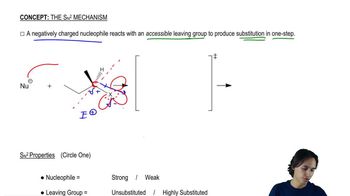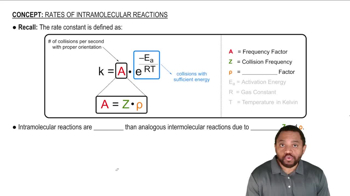Draw the products obtained from the SN2 reaction of:
c. (S)-3-chlorohexane and hydroxide ion.
d. 3-iodopentane and hydroxide ion.
 Verified step by step guidance
Verified step by step guidance Verified video answer for a similar problem:
Verified video answer for a similar problem:



 8:33m
8:33mMaster Drawing the SN2 Mechanism with a bite sized video explanation from Johnny
Start learning